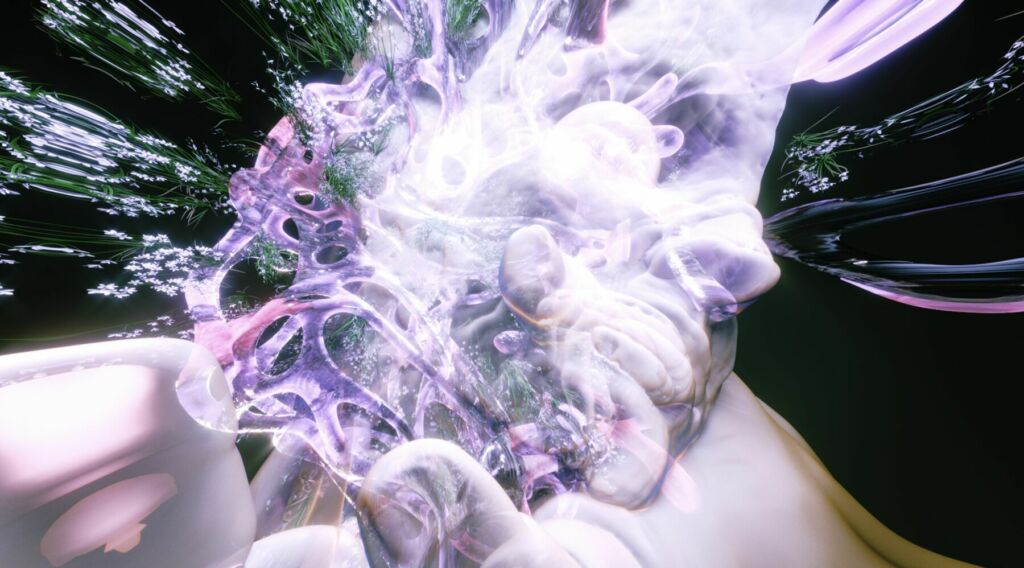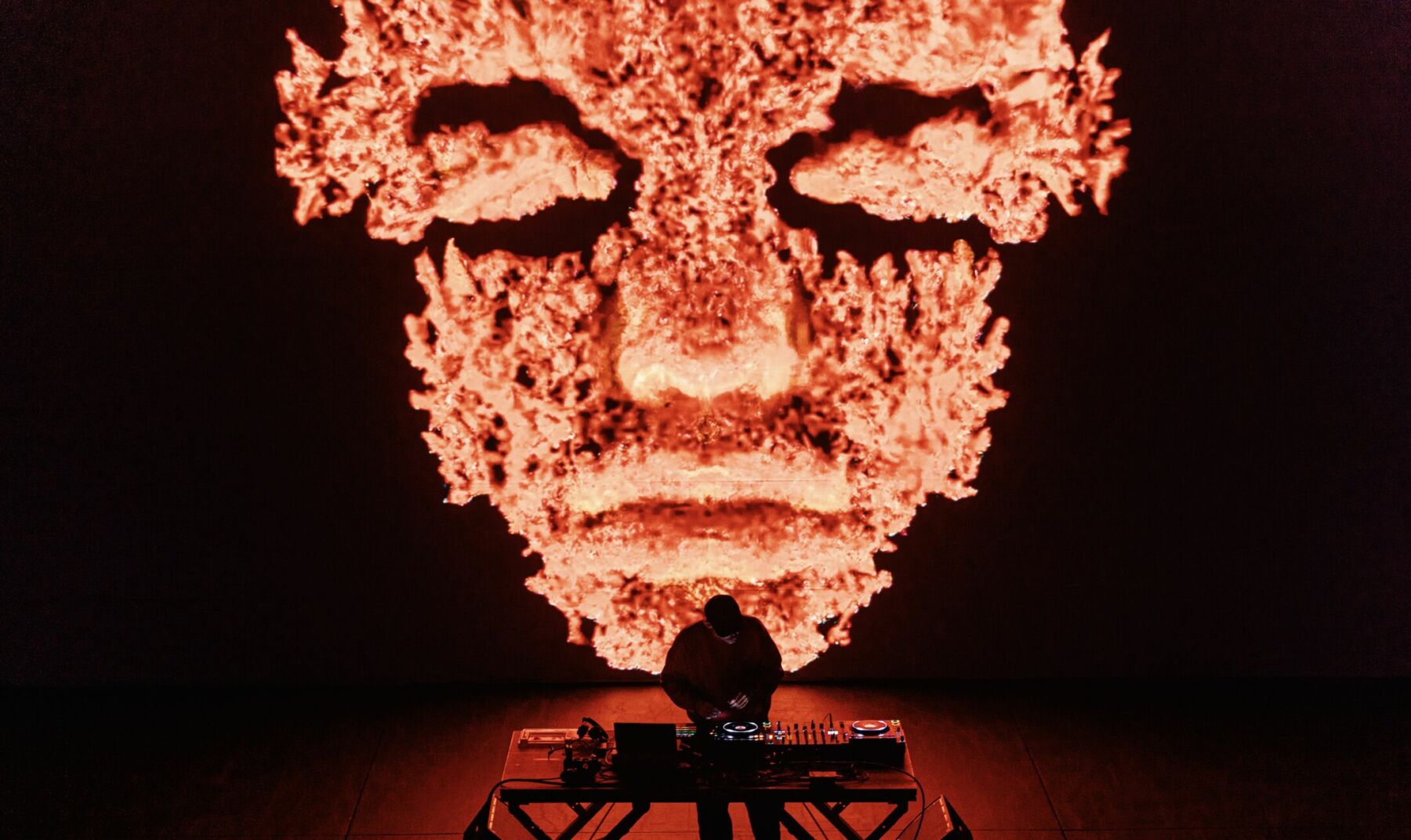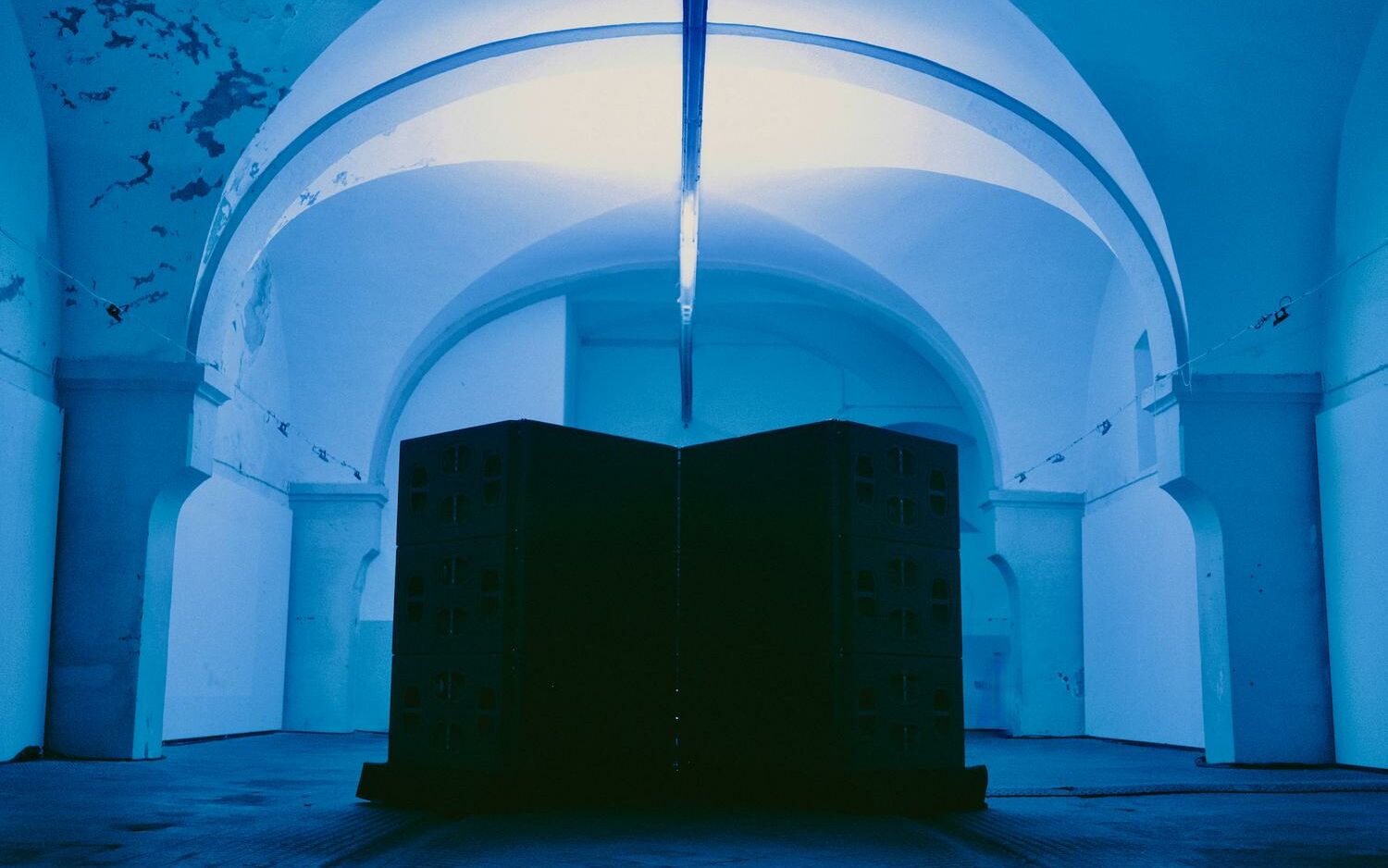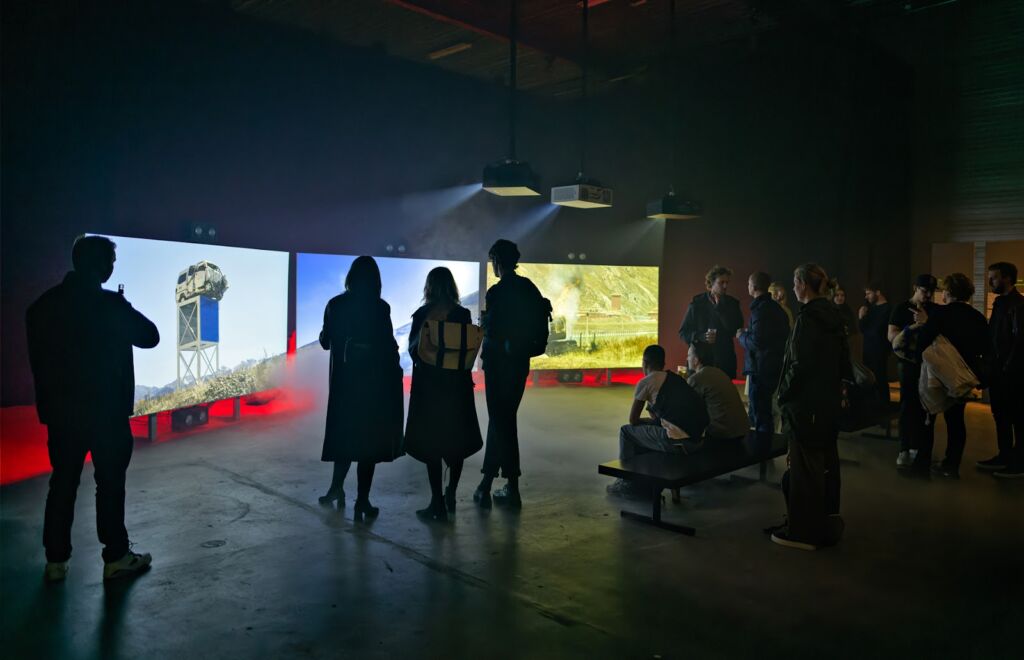Text by Katažyna Jankovska

FIBER Festival returns for its 9th edition presenting contemporary audiovisual art, experimental electronic music, and discussions on technological developments and societal issues. This year, the compact version of the festival will run from May 29 to June 2 with a series of intimate events across various spaces in Amsterdam. The festival, as usual, will be articulated around three angles and modes: the main festival event with live shows and performances, a context program with talks and panels, and two exhibitions. With the theme Outer/Body five days of the festival will surprise us with premieres, commissioned works, and various artistic practices from The Netherlands and abroad.
Our perception of where the body begins and where it ends has changed. As embodied and immersive forms of experience have increasingly come to the fore in recent years, looking at the theme of the body and its boundaries has become more intriguing than ever before. We see our bodies as inseparable from technology, extending them beyond standard corporeal limits and connecting them through spaces and networks, both technologically and ecologically.
The exploration of the body, embodiment, and technologies has recurred since the early 1990s. From Stelarc’s performance art merging the body with technology to Lynn Hershman Leeson’s notion of “anti–body” referring to virtual identity in cyberspace and evolving further with the advent of biotechnology, the spectrum of body representations has given rise to a wholly novel understanding of the body. This includes its myriad internal and external relationships in contemporary contexts.
In this exploration, the body emerges as a network, existing within a broader network of bodies. And not just individual human bodies but also bacterial, celestial, aquatic, virtual, and mechanical bodies. Quoting Donna Haraway, A cyborg world might be about lived social and bodily realities in which people are not afraid of their joint kinship with animals and machines, not afraid of permanently partial identities and contradictory standpoints.1
The skin, as a result, is rethought as porous and fluid, the site of encounter and exposure between body and media rather than a site of exclusion and closure2. Media theorist Bernadette Wegenstein argues that our contemporary engagement with skin indicates that interiority and exteriority have merged. The skin is no longer perceived solely as a barrier separating the inner and outer body, but rather a bridge between self and other. The skin doesn’t just act as a barrier but extends into the world, connecting our bodies to the bodies of others and to the multitude of screens and other environments we are one with.3
As we transcend the limitations of the physical human form, how do we shape, control, and portray the bodies in constant becoming? Is there even space for borders in the future of bodies, and if so, what shape will it take?

The festival’s opening night presents two performances under the theme Organ/Body. Taking place in Orgelpark, it will integrate the church’s pipe organ into a new sound of electronics and immersive light design. Interestingly, the pipe organ for centuries has been metaphorically associated with the human body, with a breath that could go on forever, creating the organ’s association with the eternal. Casimir Geelhoed will present the premiere of the Deviations, a performance made specifically for the pipe organ and commissioned by FIBER and the Orgelpark. Combining acoustical organ sound with software, live processing, and spatial sound, Casimir creates mutating sounds, suggesting new ways of music-making using organ pipes.
Swedish composers Maria W Horn and Mats Erlandsson will present a premiere performance, The Spectral Organ” a minimalist composition resulting from their long-term research into events that remain behind as “traces” or “ghosts”, accessible to those willing to listen. Maria uses site-specific source material to uncover the memories residing within buildings, objects, or landscapes.
The performances will be tied together with a light scenography created by media and light artist Zalán Szakács, using custom-built kinetic light instruments.
The second concert night, Memory Vessels, occurs at BIMHUIS, with performances that relate to the body as a carrier of memories, intense emotions, and visceral physical experiences. Aditya Surya Taruna (aka Kasimyn) will performs his latest album Bunyi Bunyi Tumbal ( or Synthetic Feeling for Anonymous Sacrifice), reflecting the emotions born out while diving into the Indonesian war archives and trying to give a voice to all who died without recognition or documentation. This exploration exposes the condition of “anonymous” bodies—those rendered nameless, absent, or invisible by systems that reduce human beings to mere bodies, progressively categorising bodies into those that matter and those that do not. From this material, the live AV show was developed in collaboration with visual artist Brandon Tay.
Pyur (Sophie Schnell) will also performs her most recent album, Lucid Anarchy, created during a period of personal and emotional transition. This journey unfolded as she moved from the fast-paced urban life in Berlin to a small fishing village in Bretagne, then to the Jura mountains, and an alpine village in Austria. As a vessel for our experiences, the body becomes a repository of memories that shape our perceptions and define our essence. The contrasting surroundings of wild nature and human-made environments find resonance within the album, mirroring her chaotic inner experience and the endlessness of the world.



On Friday and Saturday, de Brakke Grond will again host a day program, bringing together leading and upcoming artists, performers, and researchers for a series of lectures, panels, and sound interventions. The symposium program will delve deeper into the festival’s theme, Outer/Body, and explore the cross-pollination between artistic research, technological developments, and pressing social challenges. On Friday, two performances by Nexcyia and LOREM will drive an immersive journey that leads through themes of otherness, exploring lived or synthetic identity. Saturday night will take over the Garage Noord with a lineup of experimental live performances, and DJ sets from different electronic music styles worldwide.
Sunday will be focused on developing and presenting sound art from the Netherlands and Belgium. In collaboration with FIBER, STUK, and the Brakke Grond, the programme Neighbouring Frequencies will present initiatives from both emerging and established artists active in the field. Visitors will be invited to learn about the history, present, and possible future of sound art, from the perspective of Flemish-Dutch collaborations while also looking at developments in Wallonia.
The program will completed by two exhibitions taking place in Door Open Space, a 3000 m2 warehouse in the North of Amsterdam (May 30 to June 2), and de Brakke Grond (May 29 to June 16). The first will present a selection of immersive and critical installations reflecting on the festival theme.
The second one, also titled Neighbouring Frequencies, will showcase the work of five sound artists (Els Viaene, Floris Vanhoof, Oussama Tabti, Stijn Demeulenaere, and Luis Lecea Romera) who portray the interconnectedness and richness of sound art in and around The Netherlands & Belgium. The show aims to connect the audience to the larger network of bodies, revealing hidden processes and amplifying sounds of electromagnetic waves, symphonies of endangered goldfinches, and the interplay between man-made sounds and marine life.
Known for their forward-thinking and thoughtfully curated programs, this year’s edition of FIBER promises to serve practices that satisfy both our minds and corporeal bodies. Promoting experimentation and collaboration, FIBER has proven its ability to enable the audience to inhabit different perspectives. With performances adapted to specific locations and commissioned new works, this year will bring different bodies together, allowing audiences to discover new talents and experience changing bodily states through unconventional sounds.
More info and tickets here.






